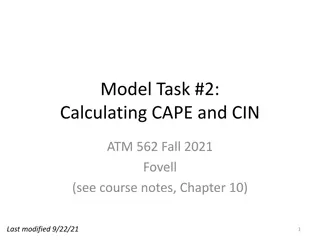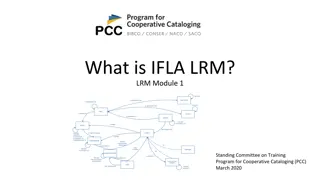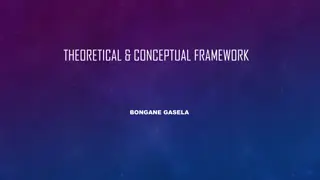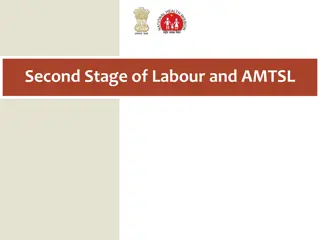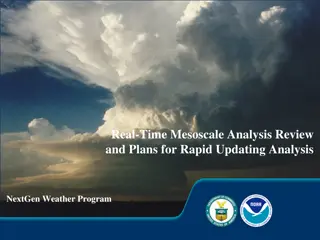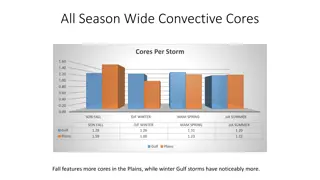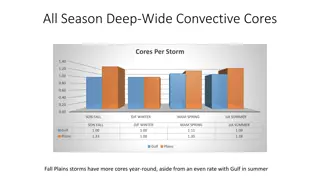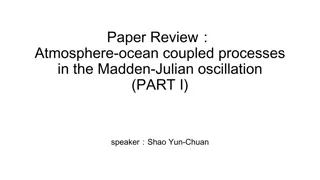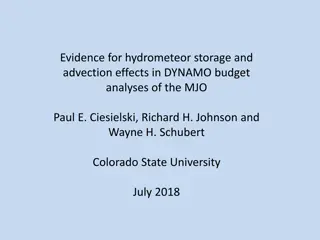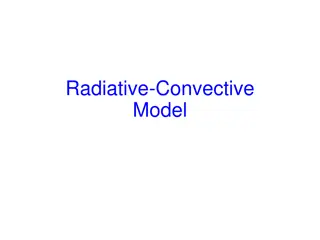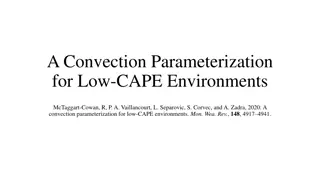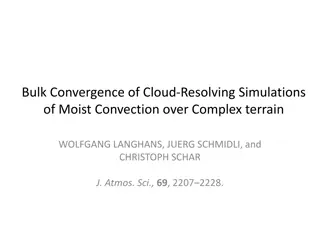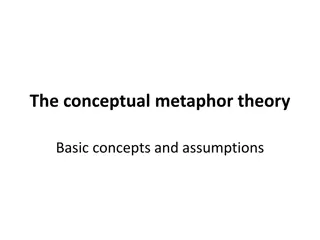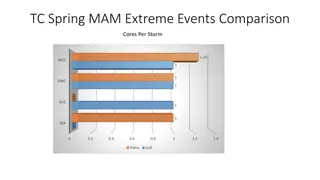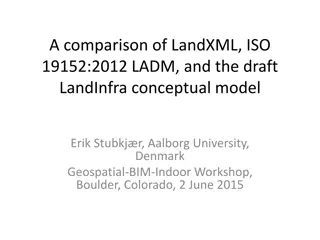Conceptual Model for Hydrometeor Structure of Mesoscale Convective Systems during MJO Active Stage
This study presented a conceptual model for characterizing the hydrometeor structure of Mesoscale Convective Systems (MCSs) during the Madden-Julian Oscillation (MJO) active stage. The research focused on the kinematic structure of MCSs and utilized radar data, compositing methodology, and convective updraft composites to analyze the organization of hydrometeors within these convective systems.
Download Presentation

Please find below an Image/Link to download the presentation.
The content on the website is provided AS IS for your information and personal use only. It may not be sold, licensed, or shared on other websites without obtaining consent from the author.If you encounter any issues during the download, it is possible that the publisher has removed the file from their server.
You are allowed to download the files provided on this website for personal or commercial use, subject to the condition that they are used lawfully. All files are the property of their respective owners.
The content on the website is provided AS IS for your information and personal use only. It may not be sold, licensed, or shared on other websites without obtaining consent from the author.
E N D
Presentation Transcript
A Conceptual Model for the Hydrometeor Structure of Mesoscale Convective Systems during the MJO Active Stage Hannah C. Barnes Robert A. Houze, Jr. University of Washington 31st Conference on Hurricanes and Tropical Meteorology Town & Country Resort and Conference Center, San Diego, CA 2 April 2014 Funded by NSF Grant AGS 1059611 and DOE Grant DE-SC0008452
Objective Characterize hydrometeor structure of MCSs Composite with respect to kinematic structure
Kinematic Structure of Mesoscale Convective Systems (MCSs) Moncrieff (1992): Layer airflow Kingsmill and Houze (1999): 3D structure Convective Stratiform
NCAR SPolKa Radar Addu Atoll Dual wavelength Only using S-Band Single Doppler Dual-polarimetric Particle Identification Algorithm (Vivekanandan et al., 1999) RHI sector and within 100 km
Case Selection Convective: 24 Oct 2011 Vr profile dBZ SPolKa data during active phases Subjectively identify cases SPolKa radial velocity Layer lifting One per storm Stratiform: 23 December 2011 Vr profile dBZ 25 Convective Cases 37 Stratiform Cases
Compositing Methodology 1.) Map kinematics and hydrometeors using radial velocity and PID 2.) Composite around layer lifting model Composite Structure Radar Data X Scale Factor Z Scale Factor
Convective Updraft Composites Graupel Heavy Rain Moderate Rain Light Rain Rimed Aggregates Wet Aggregates Small Ice Crystals Dry Aggregates Horz. Oriented Ice
Hydrometeor Organization in Convective Updrafts Small Ice Crystals Dry Aggregates Graupel/Rimed Aggregates Light Rain Heavy Rain Wet Aggregates Moderate Rain
Stratiform Stratiform with leading line Stratiform without leading line dBZ dBZ 23 December 2011 18 November 2011
Stratiform with Leading Line Composites Graupel Moderate Rain Light Rain Heavy Rain Rimed Aggregates Small Ice Crystals Wet Aggregates Dry Aggregates Horz. Oriented Ice
Stratiform without Leading Line Composites Graupel Moderate Rain Light Rain Heavy Rain Rimed Aggregates Wet Aggregates Dry Aggregates Small Ice Crystals Horz. Oriented Ice
Hydrometeor Organization in Stratiform Horizontally Oriented Ice Small Ice Crystals Dry Aggregates 0 C Light Rain Heavy Rain Graupel / Rimed Aggregates Moderate Rain Wet Aggregates
Conclusions Convective Stratiform Hydrometeor organization consistent across MCS types Heating similar with and without leading line Interpretation of microphysical processes Comparison of model output and radar observations
Frequency of Occurrence Convective Updraft Inflow Stratiform with Leading Line Stratiform without Leading Line Graupel/Rimed Aggregates 88% 66% 64% Heavy Rain 92% 11% 14% Moderate Rain 100% 55% 60% Light Rain 72% 100% 100% Wet Aggregates 92% 100% 100% Dry Aggregates 100% 100% 100% Small Ice Crystals 92% 100% 89% Horizontally-Oriented Ice Crystals 20% 44% 53%
Areal Coverage Convective Updraft Inflow Stratiform with Leading Line Stratiform without Leading Line Graupel/Rimed Aggregates 2% 0.3% 0.5% Heavy Rain 12% 4% 1% Moderate Rain 16% 5% 6% Light Rain 13% 28% 31% Wet Aggregates 3% 1% 4% Dry Aggregates 22% 12% 18% Small Ice Crystals 12% 26% 18% Horizontally-Oriented Ice Crystals - 2% 2%
Distribution of Convective Polarimetric Variables Reflectivity Linear Differential Reflectivity GA HR MR LR WA DA SI HI GA HR MR LR WA DA SI HI Correlation Coefficient Differential Reflectivity Differential Reflectivity GA HR MR LR WA DA SI HI GA HR MR LR WA DA SI HI Specific Differential Phase Temperature GA HR MR LR WA DA SI HI GA HR MR LR WA DA SI HI
Distribution of Mid-Level Polarimetric Variables Reflectivity Linear Differential Reflectivity GA HR MR LR WA DA SI HI GA HR MR LR WA DA SI HI Correlation Coefficient Differential Reflectivity GA HR MR LR WA DA SI HI GA HR MR LR WA DA SI HI Temperature Specific Differential Phase GA HR MR LR WA DA SI HI GA HR MR LR WA DA SI HI
Mid-Level Inflow with Leading Line Convective Updraft Confidence of PID PID interest value Likelihood of particle type Highest interest value chosen PID confidence Difference of 1st and 2nd largest interest values Larger difference = more confidence
Mesoscale Modeling of Squall Line Zonal Wind WRF 3.4.1 Resolution: Outer 9km, Inner 3km Cu Param: Outer KF, Inner None MP Param: Both - Goddard PBL Param: Both UW Forcing: ERAi 00 UTC 23 Dec 00 UTC 25 Dec Reflectivity Model Domains 20oN 10oN Latitude 0o 10oS 20oS 48oE 60oE 72oE 84oE 96oE 108oE Longitude
Distribution of Hydrometeor Mixing Ratio Zonal Wind and Reflectivity Cloud Mixing Ratio Rain Mixing Ratio Graupel Mixing Ratio Snow Mixing Ratio Ice Mixing Ratio
Differences in Graupel/Rimed Aggregates and Wet Aggregates in Mid-Level Inflow Cases Wet Aggregates Only Graupel



